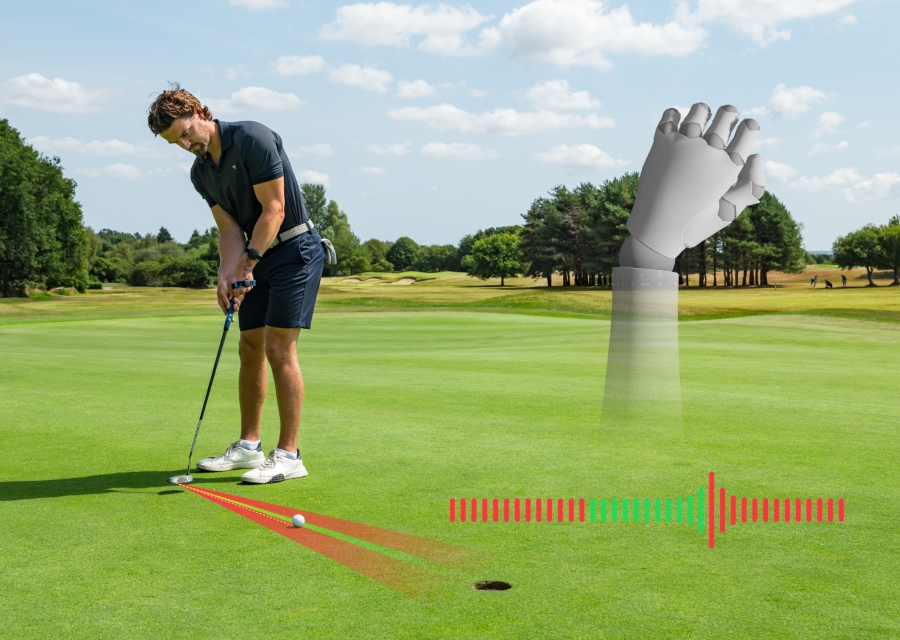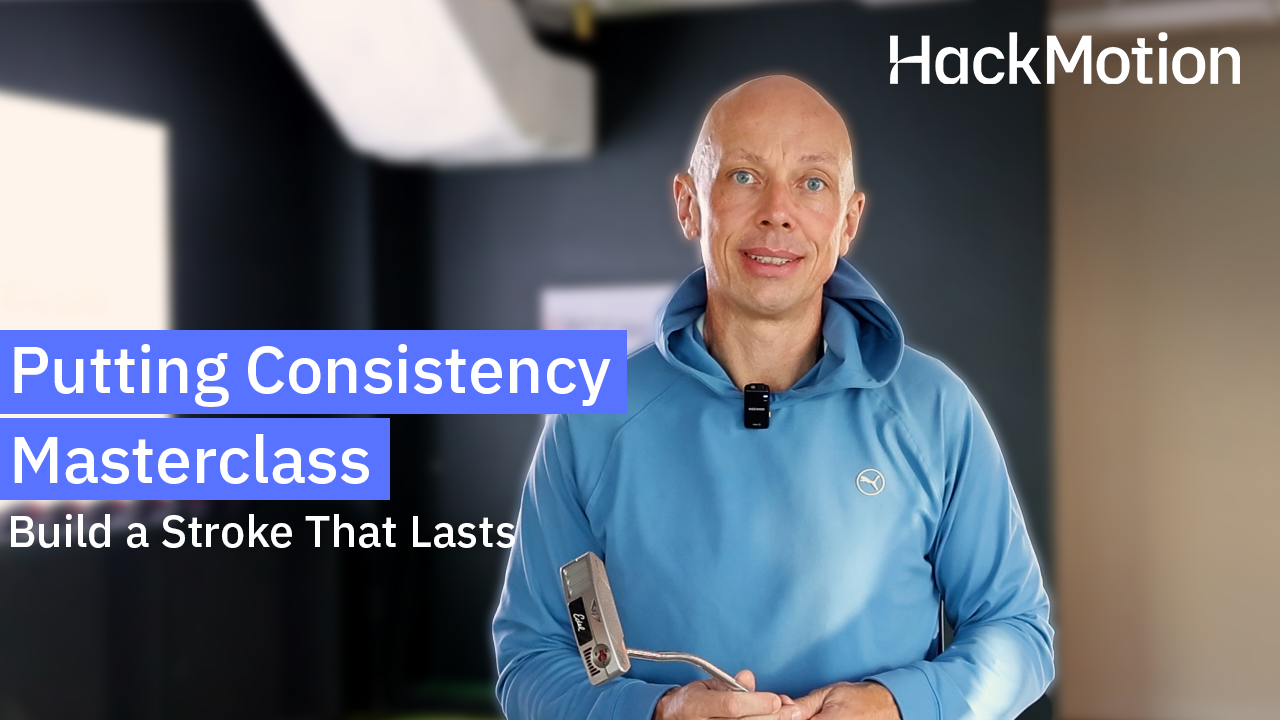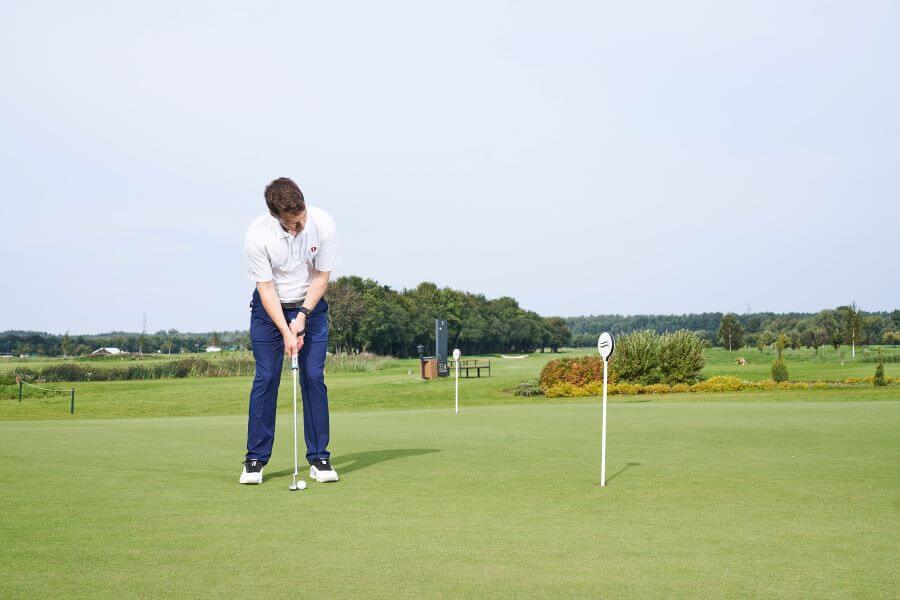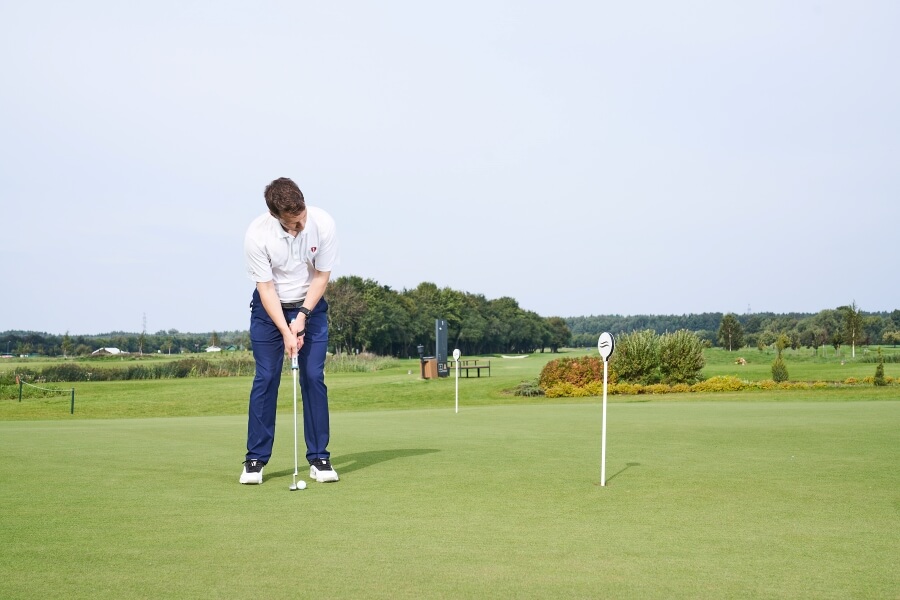Average Putts Per Round by Handicap (And How to Actually Lower Yours)
Most golfers can tell you whether they had a “good putting day” or a “bad putting day,” but very few can explain what that actually means.
Were there fewer total putts? Fewer 3-putts? Better distance control? Or just a feeling based on a couple of memorable makes or misses?
Putting is one of the simplest areas of the game to track, yet most players move from round to round without recording anything concrete.
When you take away the emotion and look at the numbers, you start to see patterns, patterns that reveal where your putting truly stands and what needs to improve.
Shot-tracking companies like Shot Scope and Arccos give us reliable benchmarks for how many putts different handicaps typically take per round.
When you combine that information with HackMotion wrist data, you get a much clearer path forward: where you are, where you need to go, and how to make measurable progress one stroke at a time.
Contents
Average Putts Per Round by Handicap Chart
Here are some numbers based on the trends seen with Shot Scope, Arccos and other golf data providers.
| Handicap | Average Putts per Round | 3-Putts per Round |
|---|---|---|
| 0–5 | 29.0 – 30.2 | 0.6 – 1.0 |
| 6–10 | 30.5 – 31.8 | 1.2 – 1.6 |
| 11–15 | 32.0 – 33.5 | 1.6 – 2.1 |
| 16–20 | 33.8 – 35.2 | 2.1 – 3.0 |
| 21–25 | 35.5 – 36.8 | 3.0 – 3.8 |
| 26+ | 37.0 – 39.5 | 3.8 – 5.0+ |
As you can see from the table, each handicap tier improves by about one putt per round. While that may seem like a small number, it takes time to improve your putting and see your average decrease.
What These Numbers Mean for You
Putting feels volatile because one great make or one frustrating lip-out can shape how you remember an entire round. That’s why tracking averages matters. Instead of basing improvement on emotion, you’re basing it on data.
Here’s how to use that data effectively.
Step 1: Start Tracking Your Putting Data
You can’t improve what you aren’t measuring. Use any method you prefer:
- Arccos
- Shot Scope
- A simple notes app
- Your scorecard
If you can track strokes gained putting, that’s ideal. It tells you how well you putted relative to expectation, not just how many putts you took.
You’ll also probably have data about the lengths of putts and which areas you struggle with the most.
Step 2: Set One Goal (One Fewer Putt per Round)
Trying to cut 4–5 putts at once is unrealistic because putting performance naturally fluctuates. Some days you’ll make everything. Some days you won’t.
What works is aiming for one fewer putt per round than your current average. When that becomes consistent, aim for the next one. Small, steady progress wins here.
Step 3: Identify Why You Miss Putts
Most golfers don’t have a green-reading problem or a speed problem. They have a wrist-control problem. HackMotion reveals patterns every golfer should know:
- Is your lead wrist stable?
- How much face rotation do you add or remove?
- Does your loft delivery change from putt to putt?
- Is your rhythm predictable or inconsistent?
Face angle at impact is the biggest predictor of where the ball starts, and your wrists control the face.
Fix the wrists = Fix the face = Fix your putting average.

If you want a clear explanation of how your wrists affect face control and start line, read our guide on Wrist Action in Putting.
Proven Drills to Lower Your Putting Average
These three drills target the wrist patterns that matter most:
- Flexion stability
- Rotation control
- Stroke rhythm
Master these patterns, and your putting numbers will move in the right direction.
Flexion–Extension Putting Drill
The flexion-extension drill is the best place to start. This drill will help you work on loft consistency, strike quality, and face stability.
A stable lead wrist delivers the same loft and strike every time. That’s the foundation of predictable roll.
Flexion–Extension Putting Drill – Step by Step:
- Set up with HackMotion running in putting drill mode with the Flexion/Extension drill.
- Make small rehearsal strokes, keeping lead-wrist flexion/extension steady.
- Hit 10 putts with the same feel.
- Aim for a “flat to slightly flexed” wrist at impact.
- Try outside of the drill and work on making a few 7-10 foot putts. Are you more consistent?
Rotation Stability Putting Drill
The rotation stability drill improves the start-line accuracy, directional control, and your consistency under pressure. There’s some rotation in the putting stroke, but if you exaggerate it or can’t repeat it, you’ll notice problems in your putting averages.
One thing that we’ve discovered with the best putters in the world is that their putting consistency is what sets them apart. The motion isn’t always perfect, but the consistency of that motion is.
If rotation varies from stroke to stroke, the ball starts left or right, even with a good read.
Rotation Stability Putting Drill – Step by Step:
- Use the HackMotion Rotation drill.
- Take putts and monitor rotation from takeaway to follow-through, try to stay in the green zone.
- Hit 10 putts, keeping rotation changes within a tight window.
- Your goal: predictable rotation = predictable start line.
Rhythm Ratio Drill
Once you have the putter face and the start line correct, you can start working on your rhythm and ratio.
When your rhythm is predictable, speed control becomes significantly easier, especially on longer putts. Most golfers don’t know how far off their rhythm and ratio are until it’s measured.
Rhythm Ratio Drill – Step by Step:
- Use the HackMotion Rhythm Ratio drill.
- Turn on HackMotion’s tempo and rhythm tools.
- Work toward a smooth 2:1 backswing-to-through-swing ratio.
- Focus on effortless acceleration, not force.
- Try to get consistent and continue the correct rhythm for several putts in a row.
For more simple, practical tips and drills to improve your putting and lower your average, take a look at our Best Putting Tips article.
How to Measure Progress the Right Way
Putting improvement is all about trends, not one-offs.
Here’s how to track real progress:
1. Track One Metric at a Time
Pick one:
- Putts per round
- 3-putts per round
- SG: Putting
- Make % inside 10 feet
2. Reassess Every 4-6 Rounds
Day-to-day putting has too much fluctuation. Rolling averages show true improvement. Check every 4-6 rounds at how your average is trending and then look at it over 10-12 rounds and see what changes you are seeing.
3. Check Your HackMotion Patterns Weekly
- Is flexion stable at impact?
- Is rotation predictable?
- Is your rhythm consistent?
When these three patterns improve, your putting average typically follows.
If 3-putts are still a problem, check out our guide on How to Stop 3-Putting for clear steps to cut them down.
Final Thoughts
Lowering your putting average doesn’t always require rebuilding your stroke. It requires consistency and more attention to detail.
HackMotion lets you work on your putting in real time and receive timely feedback to help improve your stroke.
Track your numbers, understand your tendencies, aim for one fewer putt at a time, and use HackMotion to strengthen the wrist patterns that influence every putt you hit.












